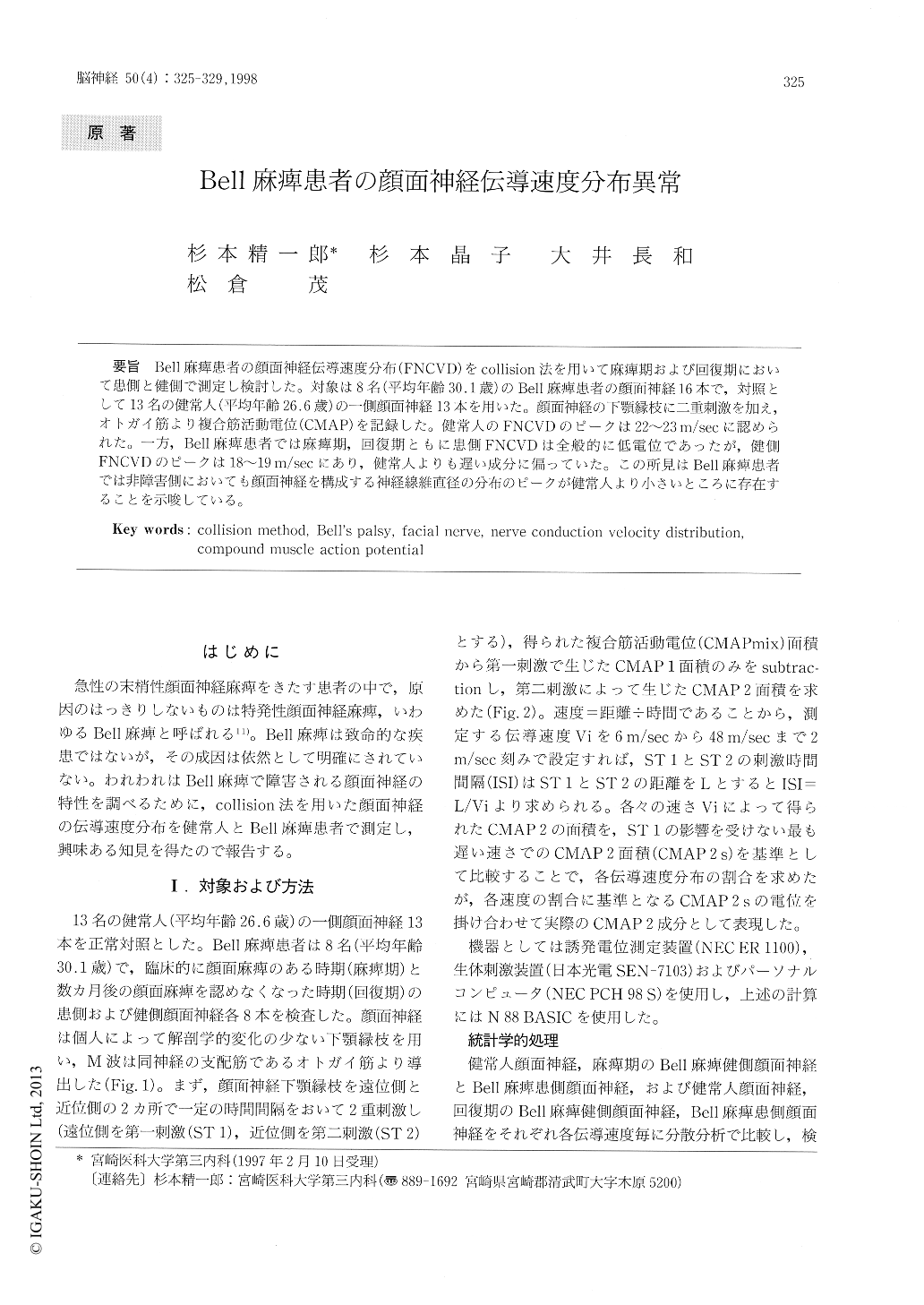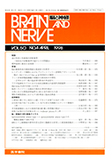Japanese
English
- 有料閲覧
- Abstract 文献概要
- 1ページ目 Look Inside
Bell麻痺患者の顔面神経伝導速度分布(FNCVD)をcollision法を用いて麻痺期および回復期において患側と健側で測定し検討した。対象は8名(平均年齢30.1歳)のBell麻痺患者の顔面神経16本で,対照として13名の健常人(平均年齢26.6歳)の一側顔面神経13本を用いた。顔面神経の下顎縁枝に二重刺激を加え,オトガイ筋より複合筋活動電位(CMAP)を記録した。健常人のFNCVDのピークは22〜23m/secに認められた。一方,Bell麻痺患者では麻痺期,回復期ともに患側FNCVDは全般的に低電位であったが,健側FNCVDのピークは18〜19m/secにあり,健常人よりも遅い成分に偏っていた。この所見はBell麻痺患者では非障害側においても顔面神経を構成する神経線維直径の分布のピークが健常人より小さいところに存在することを示唆している。
We studied bilateral facial nerve conduction velocity distribution (FNCVD) of 8 Bell's palsy patients in their paretic and recovered state and unilateral FNCVD of 13 normal control using colli-sion method. Dual supramaximal stimuli were adapted to marginalis mandibulae branch of facial nerve and compound muscle action potential (CMAP) was recorded from the surface of mentalis muscles. Peak of FNCVD in normal control was present at 22-23m/sec. In Bell's palsy patients, there was no significant change in FNCVD either at paretic or recovery state.

Copyright © 1998, Igaku-Shoin Ltd. All rights reserved.


